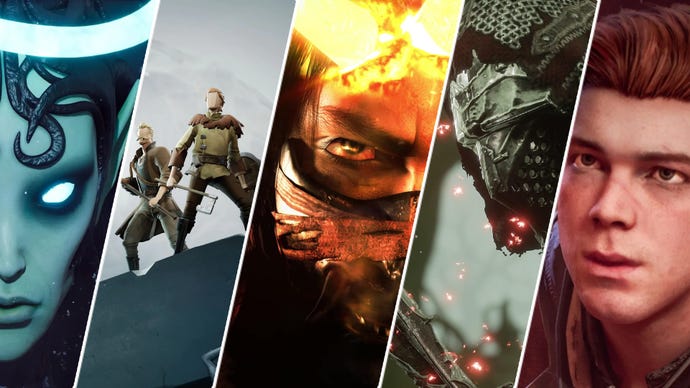Best Soulslikes to play in 2024 (that aren't made by FromSoftware)
You don't need to go to Reddit to get the list of best non-From Software Soulslikes; we've got them right here.
We still don’t have a proper name for action RPGs that take inspiration - primarily - from the work of storied Japanese studio, FromSoftware. We have a shorthand for them; Soulslikes, and the term generally refers to a core set of principles.
Soulslike RPGs typically have a form of challenging gameplay. Sometimes that’s achieved through limiting, stamina-based combat, but it could also take the form of a tight parry/dodge window, or animation-led combat that requires planning and punish mindless mashing. Soulslikes are usually set in grim, hopeless worlds, and they can sometimes get ostentatious about what are otherwise mundane concepts.
The really good ones have level design that foreshadows some of what’s to come, and often loops back on itself to really give meaning to your journey through it. But the genre mostly just relies on catching your eye with some cool enemy designs or unusual topographies that, hopefully, compel you to explore them.
More often than not, you can count on some sort of gimmick; a mechanic or system that is unique to that game. Some go out of their way to do this in order to set themselves apart from the rest, while others are content to recontextualise a cornerstone of Soulslikes that makes you consider it in a different way.
Not every Soulslike will necessarily have all of those, but they should hopefully indicate the kind of experience you’re getting yourself into when you jump into a Soulslike. Though the term is popular, the number of good and interesting Soulslikes isn’t actually high.
We’ve spent countless hours with those games, and came away with an understanding of what makes only a few of them stand out, and dooming the rest to oblivion. In this list, we’ll go over our favourite Soulslikes not made by the masters of the genre – because, after all, what can really live up to the likes of Bloodborne and Elden Ring?
Mortal Shell
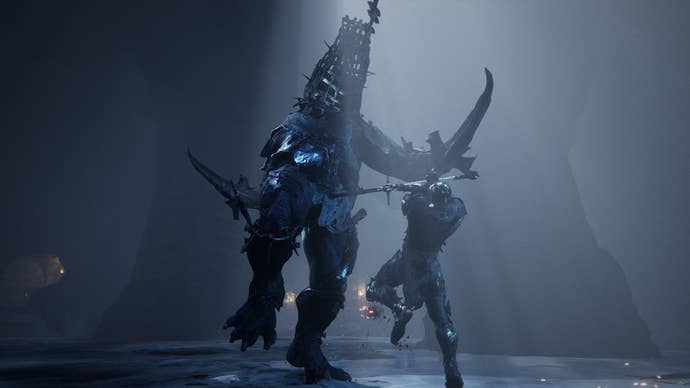
Mortal Shell is perhaps the closest of any Soulslike to classic Dark Souls. It’s quite happy to borrow from the original Dark Souls, but it occasionally brings forward ideas from the sequels. Mortal Shell’s largest area is fog-covered, with the sort of cool autumnal tones you expect from one of those.
Its combat is quite close to Dark Souls, with heavier reliance on weighted attacks, where each strike delivers an oomph. This can be punishing for players who are used to games with a much faster pace, but ironically, it’s also what makes it easier for newcomers to the genre to get into the swing of things. Combat is stamina-based, but Mortal Shell adds its own twist to what would otherwise be an act of min-maxing.
Mortal Shell has pre-made classes - Shells - that each represent a fallen hero. Think of it like loading up someone else’s save file to see the different characters they created. Each Shell is designed for a certain playstyle, and their attributes are allocated where it makes sense for the type of gameplay each can provide.
The real strength of Moral Shell, however, comes in how it lets players switch between Shells mid-combat. In the game, your actual form is not what you show up to fight as; you’re only inhabiting each Shell. Losing all HP knocks you out of your Shell, and though you can still fight in your primitive form, you’re unlikely to have any real success.

But that also means you can jump into a different Shell, if you manage to plant one beforehand. This is especially useful in boss fights, where you can enter the fight as one Shell, die, and return as a different Shell. Later into the fight, you can inhabit the one you planted earlier. The game encourages you to do this, and you’ll later find items that let you warp between shells on the fly.
Mortal Shell’s other unique addition is its Hardening mechanic, which lets you turn into stone before taking a hit, and break out to riposte. It looks fluid in motion, and becomes a surprisingly effective tactic against tougher enemies. Timing it right can stagger an aggressive enemy, or break their combo.
If you really take into consideration all of those mechanics, you end up with a playstyle that brilliantly blends classic Dark Souls with modern ideas, and it’ll become quite clear that you’re not just doing the dance of locking-on, dodging/rolling and waiting for an opening that so many Soulslikes fall into.
Ashen
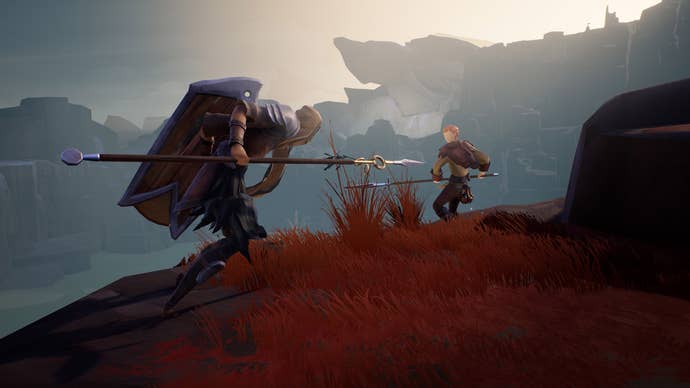
Ashen is perhaps the most intriguing Soulslike on this list. It is one of the most deceptively deep Soulslikes, which is saying a lot. It may not give you that impression the first time you see it in action, however.
HP bar, stamina bar, stamina-based combat, a gloomy world drenched in mist and dust storms, brooding NPCs, a narrative that isn’t forthcoming - you know, the whole lot. It’s not until you spend a couple of hours with it that its true spirit starts shining through.
One of Ashen’s most interesting ideas is the companion system. Over the course of the game, you get to recruit some of the NPCs you come across to tag along in your travels. They offer more than simple assistance in combat; their main use ties into Ashen’s level design. The game’s worlds tend to expand upwards more than they do outwards, and having someone with you helps reach areas you wouldn’t otherwise be able to access on your own.
NPCs can also be brought back to your hub area, which they help build and expand over the course of the game. It’s quite satisfying to return home after hours of exploring and fighting to check up on everyone, see what they’re up to and what they managed to accomplish while you were gone. It gives it a sense of kinship that’s often missing from those games.
Deeper into the game, combat continues to expand when you get the ability to equip Talismans and Relics, which are effectively perks you can bolt onto your existing play style. They start off pretty simple, just boosting stamina or HP, but grow into offering elemental effects, companion buffs, and even entire play style variations - if you’re okay with some experimentation.
Ashen, of course, can be played in co-op with another player, if you’d rather rely on a human. This might actually prove to be the better option if you like exploring every part of a level. Ashen rewards going off the beaten path by hiding collectible items that allow you to permanently boost your base stats.
Ashen has the strongest atmosphere of any game on this list, and it’s certainly one worth experiencing for yourself.
The Surge
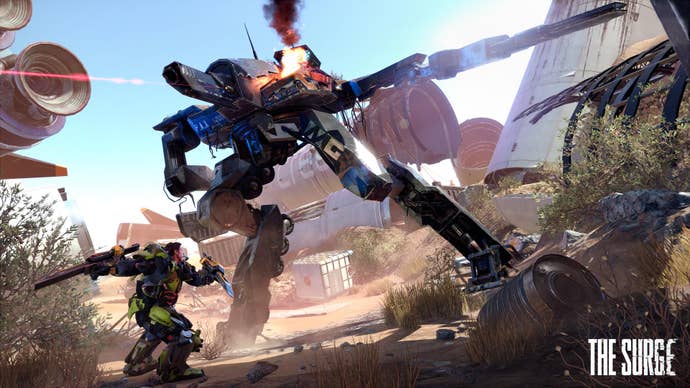
While it’s common to lump both the two Surge games together, we’d like to think that the original is the more interesting, and comes closest to delivering on its promise than the sequel. The Surge is sci-fi Souls, except it’s so much more.
The Surge is developer Deck13’s follow-up to the original Lords of the Fallen. The studio clearly learned a lot from, well, everything to do with making that game, and the often negative reaction it garnered. The Surge represents a clean break with enough fresh ideas to set it apart, but also spare it from being drawn into blow-by-blow comparisons with FromSoftware’s games.
At its most basic form, The Surge is a third-person action RPG with stamina-based combat, chunky animations that reward good planning, and a bonfire-like area that you return to every so often to level up and recuperate. Step outside the clam of those areas, however, and you’ll find that combat has more going for it than it might initially appear.
The Surge offers the unique ability to target specific body parts in combat. In a sort of distilled Monster Hunter way, you can aim to cut the head or arm of some goon, which not only slathers the screen with blood when you successfully pull it off, the brief slowdown really sells the impact, too. It also serves as one of its core gameplay tenets, which is farming specific gear pieces by, well, cutting off whichever enemy limb they were protecting.
The game further builds on that with the energy metre, which is used to power a multitude of offensive and defensive actions. You can think of it as mana bar in that way, but it’s not just used to power your ranged attacks, you also use it to heal, and it’s how you can deliver devastating melee finishers. Crucially, however, this energy bar can only be recharged by landing successful hits, which ends up encouraging a unique mix of aggressive movement and thoughtful targeting.
The Surge may not have the best-looking or most interesting environments compared to other games on this list, but it makes up for it by having levels constantly loop back around themselves to reward your sense of discovery, and add in enough complexity to hide some treasure for those who want to seek it out.
If you ever wondered what a (good) sci-fi Soulslike could look like, The Surge has the answer. The deeper you get into it, the more you’ll find that it has yet more to offer.
Remnant and Remnant 2
.png?width=690&quality=70&format=jpg&auto=webp)
This list wouldn’t be complete without the rare game that understands the assignment so well, it manages to make it work in a different genre. This is where the Remnant games firmly plant their flag. And yes, that’s technically two games, but you can’t really praise Remnant 2 without acknowledging all the brilliant groundwork its predecessor laid out.
Remnant 2 amplifies and improves on almost every aspect of its predecessor. It does so with such confidence it’s no wonder the original gamble of ‘Soulslike but shooter’ worked so well. The Remnant games are primarily third-person shooters. There is no hipfire, so hitting the left trigger aims your weapon as it would in any other shooter, but hitting the right trigger alone transitions into melee. You can use the former to attack enemies at range, and bring out your club when they get close.
It has the same stamina-based combat you should be familiar with. It depletes as you run, dodge and melee attack in combat. Using firearms has no such limitation, but you are still limited by the ammo - and ammo types - you have access to.
Combat in Remnant is quite challenging; bosses, mini-bosses and even trash mobs will all really test your ability to juggle between shooting and clubbing, and routinely expect you to have a good understanding of invincibility frames on dodges to time them right.
.png?width=690&quality=70&format=jpg&auto=webp)
Remnant’s biggest triumph, however, is its understanding of the sense of discovery at the core of FromSoftware games. The game uses procedural generation to create wildly different level layouts for its areas. This doesn’t just mean different corridors, it also includes the puzzles you come across, whether or not certain quests spawn, and affects which NPCs you could meet, vendors and even the bosses that spawn.
Every time you start a new character, you essentially create a seed that has premade odds. That seed also arranges the story in a way that’s unique to that character, meaning you could start out in a world different from your friends, and get access to a central hub area from a different angle - which lets you interact with characters you wouldn’t otherwise have access to in the early game (had you started out somewhere else). Perhaps that compels you to make misguided alliances, or misjudge characters because you don’t have the full story.
The only way to really see everything Remnant has to offer is to join friends’ co-op games, and witness what their seed has manifested. Remnant thrives in co-op, so you’ll not only be unlocking the game’s full potential, you’re going to witness different events play out in different ways every time you do it.
You can even reset your seed, which has a similar effect. Each time you do this, you open yourself up to experiencing something different, which often comes with its own rewards. Remnant has a core class system that’s fluid enough that you can augment it with traits from other classes, and thrives when you combine exploration with puzzle-solving and combat. Remnant is proof that FromSoftware’s formula not only works in co-op, in a shooter, but that it’s malleable enough to be augmented with elements from other genres, such as rogue-likes, to create a wholly unique experience.
Nioh and Nioh 2
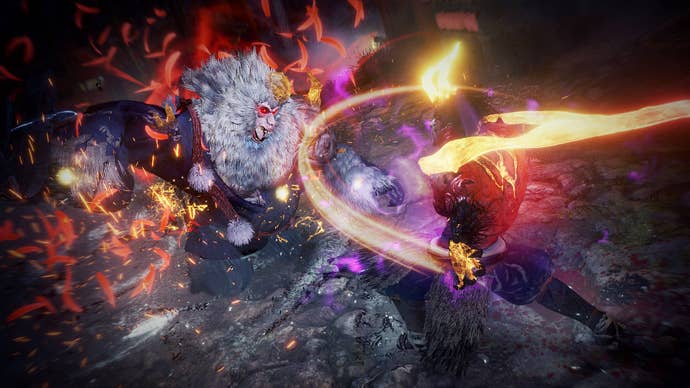
The Nioh games delight in killing you. More than, perhaps, their FromSoft counterparts. The basic enemies you’ll encounter level-to-level in Team Ninja’s PS5 and PC spin on the series are harder than the vast majority of regular enemies you’ll encounter in a wealth of other Soulslikes, and that’s the way it’s meant to be.
You’re supposed to get your guts smashed to jelly by a rampaging demon ape on the regular. You’re supposed to dread seeing a winged Tengu guarding a thin mountain pass. You’re supposed to curse as you burn to death after a head inside a wheel runs you over and sets fire to your grounded corpse.
The Nioh series, compared to others on this list, can be seen as a bit of a deviation from the Soulslike oeuvre on this page. Whilst it does share a wealth of FromSoft’s trademark mechanics – scantly-checkpointed and labyrinthine levels, respawning enemies, and bosses that serve to humiliate and skill-check you – there is also a big difference in how they play.
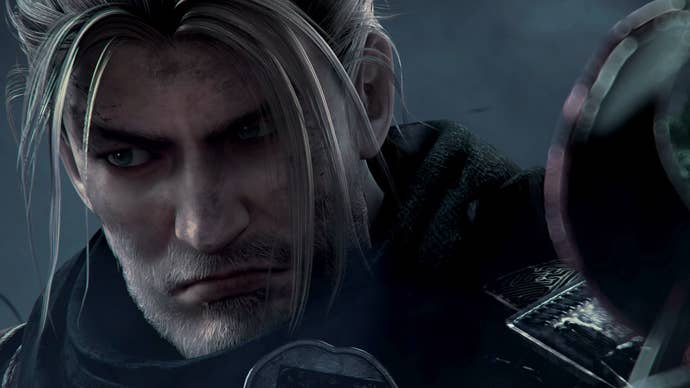
It comes down to some of the level choices (there are ‘worlds’ and levels, rather than one knitted-together place), and the stance-based combat that, at times, feels even better than what FromSoft puts out. You can probably die to two-hit attacks from rank and file enemies. You need to learn how to parry if you want to power up and summon your inner demon (in Nioh 2, at least). You need a decent understanding of how elemental resistances and properties work.
Where you can play some Soulslike games like action titles (here’s looking at you, DEX/Bleed builds!), you really need to approach Nioh more like an RPG if you want to overcome its Sengoku-period challenges and enjoy its samurai-heavy story. You’ll find yourself quickly overcome by ‘cheap’ bosses if you don’t learn how to leverage the gaps in their defences, otherwise.
There’s also a cheeky kind of humour to Nioh that I really enjoy; sniffing out the hidden Kodama on every level, and seeing some of the Oni interact with each other in a stupid way is really fun – and often serves as vital comic relief in a game that can, regularly, feel far, far too tense.
Star Wars Jedi series
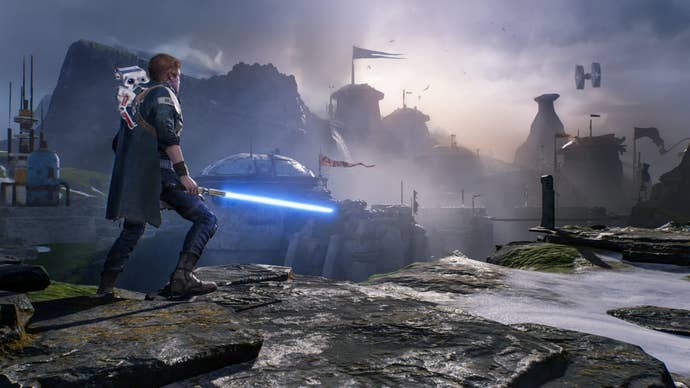
Bear with me here. The two Respawn Star Wars games (that’s Jedi Survivor and Fallen Order) are very good, very approachable ‘my first Souls’ kind-of games. They have nowhere near the depth or complexity of some of their other genre stablemates, but there’s enough similarity for us to sit back and say ‘yeah, this belongs on the list.’
Think about it; there’s a central, parry-based combat system, there’s a rest point that heals you but also respawns enemies, there are major boss battles in both open world and story-centric areas, and there’s levelling systems that come from how you overcome combat challenges. But then, also, there are difficulty modes, and abilities that help open up new paths – more Metroidvania than Dark Souls, I think.
But the game is good; the pacing and puzzling are exceptional, and in both titles, I’m reminded of the envrionmental puzzling of old classics like Legacy of Kain: Soul Reaver more than anything more modern (this is a very good thing, I promise). Granted, these elements make it feel less Dark Souls and more generic action-adventure, but then you encounter some beefed-up Empire boss that requires parrying and dodge-rolling to beat, and I’m back in the ‘OK, this is a Soulslike game’ mindset.
Perhaps we should call it more Soulslite than Soulslike? Maybe that feels better on the tongue. Either way, if you want an introduction to this series – in a universe you know and in a way that isn’t going to have you throwing your controller through your screen – you could do worse than the Jedi series. A bonus: you also get to play around with Respawn’s wonderful traversal mechanics. And that’s always a good thing.
If you want something a bit meatier to get your teeth into, why not try our best ever RPGs list instead?
